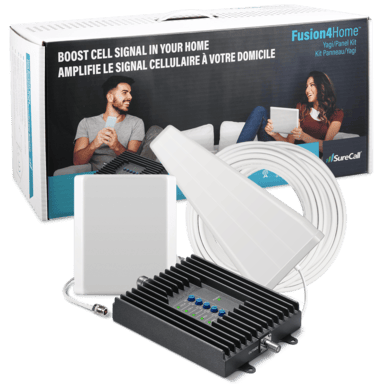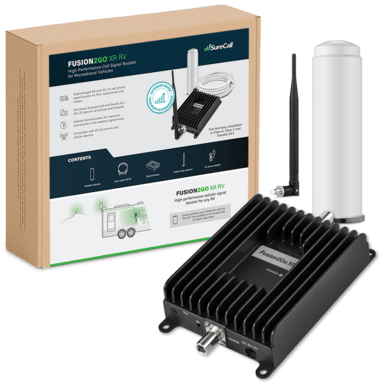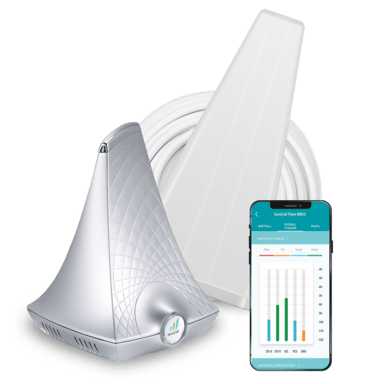
Capacity In The Cell Signal Oriented World
Posted by Dennis Findley on 14th Mar 2017
Remember, it isn’t always about cell tower reach, cell tower capacity is also a key factor.
It seems that all the cellular carriers have really been pushing this “friends and family” focused method of data/plan sharing. I was recently at my local carrier store upgrading my phone when the salesperson helping me mentioned the infamous “promo”. If I would have added a line and bundled my wife’s line, my line, our cable, our internet and an additional line it would save me $10 a month. When I told him we didn’t really have another person we could add to our plan, he went through an exhaustive interrogation process asking if there were any friends, neighbors or distant relatives we could sign up. I never felt so alone in my life because I had to tell him “no”. Thanks, cell service provider who shall not be named. Now I’m going to go eat a whole gallon of Baskin Robbins Peanut Butter and Chocolate Ice Cream and contemplate my life choices.
How Many Users Can a Cell Tower Support?
Quick answer: A typical macro cell tower can handle roughly ~30 simultaneous voice calls and ~60 active 4G/LTE data users before performance degrades. Engineers often design LTE cells to serve ~100–200 active users (depending on bandwidth), while 5G aims far higher—up to 1,000,000 connected devices per square kilometer under the IMT-2020 spec.
Factors That Limit Cell Tower Capacity
Even if a coverage map shows “good” service, a tower’s usable capacity is capped by physics, spectrum, and real-world congestion. Key limiters include:
-
Available spectrum & channel bandwidth: more MHz = more lanes on the highway.
-
Radio technology & standards: GSM/3G vs. LTE vs. 5G; MIMO layers, carrier aggregation.
-
Number of sectors & antennas on the site: 3 sectors is common; more sectors = more capacity per tower.
-
Interference and RF noise: dense urban sites or overlapping cells force the network to throttle.
-
Backhaul capacity: fiber/microwave links from the tower to the core can bottleneck.
-
User mix & behavior: HD video vs. text messages, stationary vs. fast-moving devices.
-
Carrier policies & prioritization: postpaid customers or first responders may be prioritized over MVNO users like Total by Verizon.
What Happens When Too Many People Use a Cell Tower?
When demand exceeds capacity, you’ll see:
-
Slower data speeds and spiking latency as the scheduler slices thinner resource blocks.
-
Dropped/blocked calls or “network busy” errors—the tower simply can’t admit more sessions.
-
Failed connections (RRC/RACH failures) and timeouts as devices keep retrying to attach.
-
Carrier mitigation steps such as load balancing to neighboring cells, adding small cells, or deploying COWs (cells on wheels) for events.
For many people, bundling services has made a positive impact on their lives, making them convenient and efficient. However, it is still the carriers’ responsibility to provide a network that can support all of these users and services. In most cases, the carriers are able to handle the simultaneous user capacity for cellular devices on their towers. This is accomplished by inadvertently preventing customers from using their phones while inside their offices or homes (or any building, actually). As mentioned in a previous post from May of 2016, building materials like metal and concrete prevent the signal from getting into the building from the towers outside. What would happen if building materials were not a factor? What if, for instance, you had a SureCall signal booster that helped you get around the challenges of concrete or metal walls? Would your problems go away? Not necessarily.
The cell towers themselves have limitations. Not only are there reach issues, but more importantly, there are also capacity issues. An average cellular tower allows about 30 simultaneous users for voice calls and 60 for 4G data. In 2014, the FCC issued a new law requiring all cellular signal boosters be registered with their carriers. This allows the carriers to see where these signal enhancers are going so they can increase capacity in those areas. Cellular boosters, like the Force5 from SureCall, can help the carriers get signal to their customers and it is much easier for them to increase capacity on their tower than it is for them to try to build one closer to the building. Also, building more towers does not ensure that you will have improved signal INSIDE the office or home.
How (and When) a Signal Booster Helps
If your phone shows usable signal outside (even 1–2 bars) but struggles inside, a SureCall booster can capture that outdoor signal and rebroadcast it indoors for all carriers and devices—without relying on Wi-Fi. This is especially helpful when towers are loaded and every dB counts.
So, make sure you register your boosters to help your carriers improve their network and enjoy increased cellular signal, brought to you by SureCall.
Fusion2Go XR RV Cell Phone Signal Booster
Fusion4Home Yagi Panel Indoor Signal Booster



